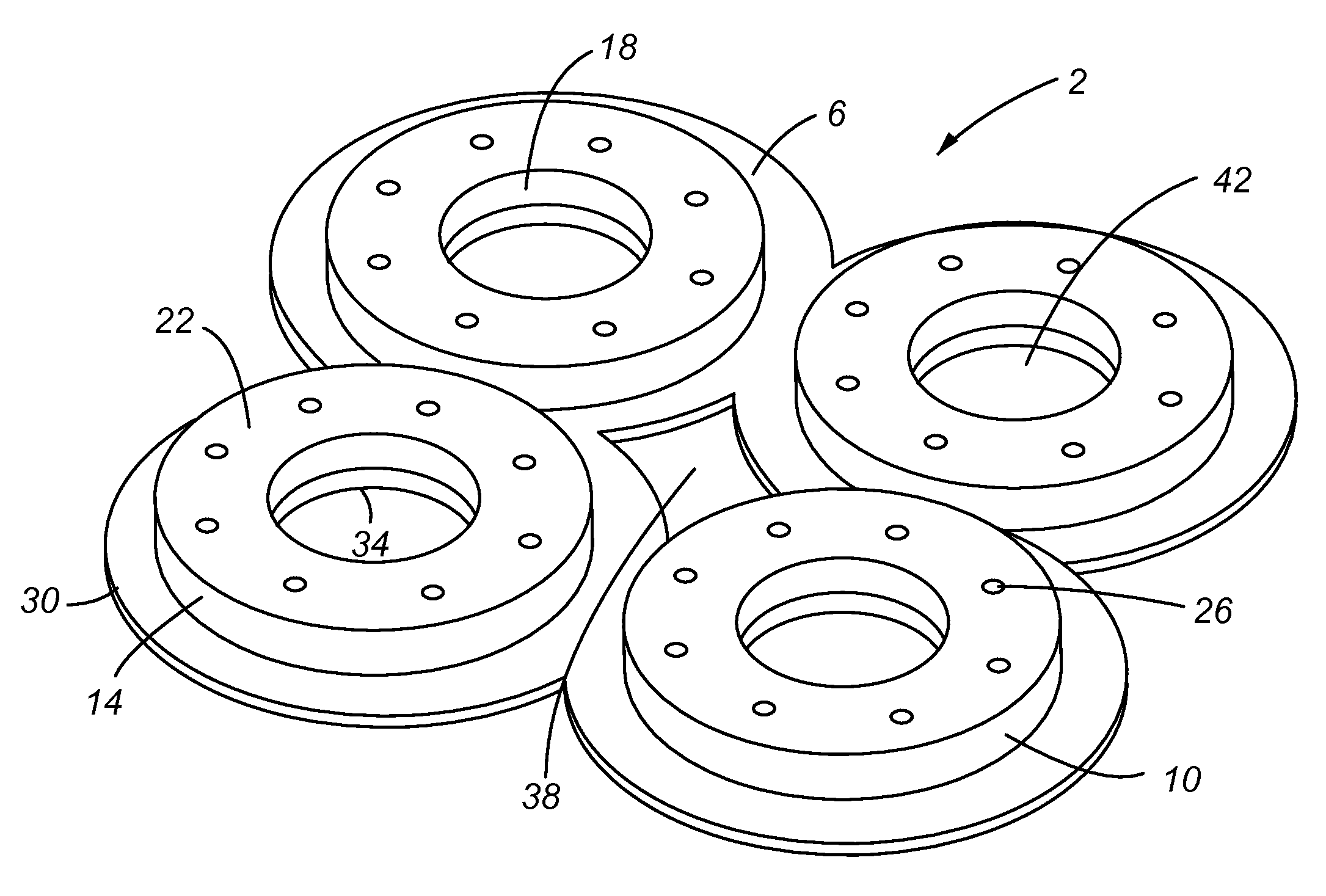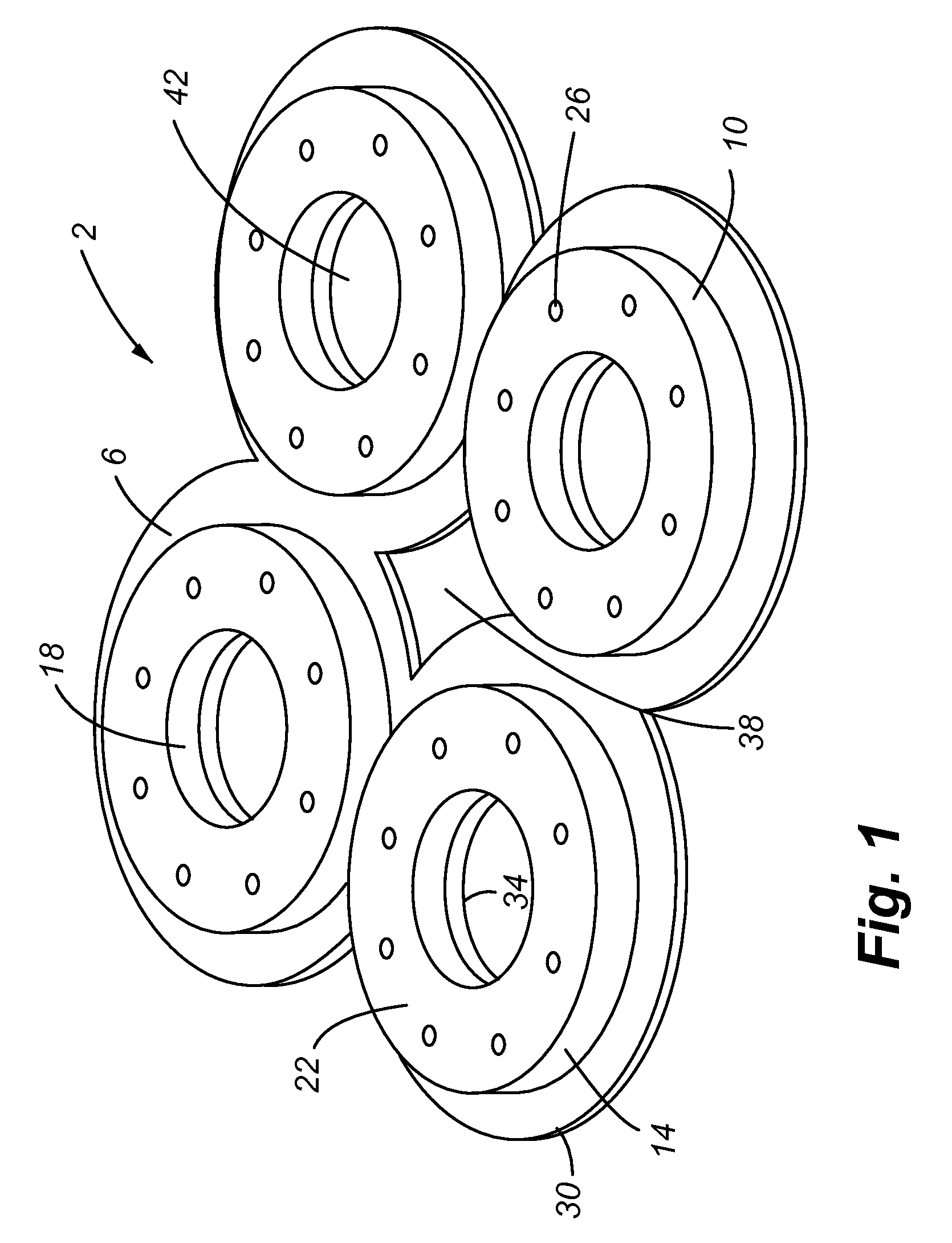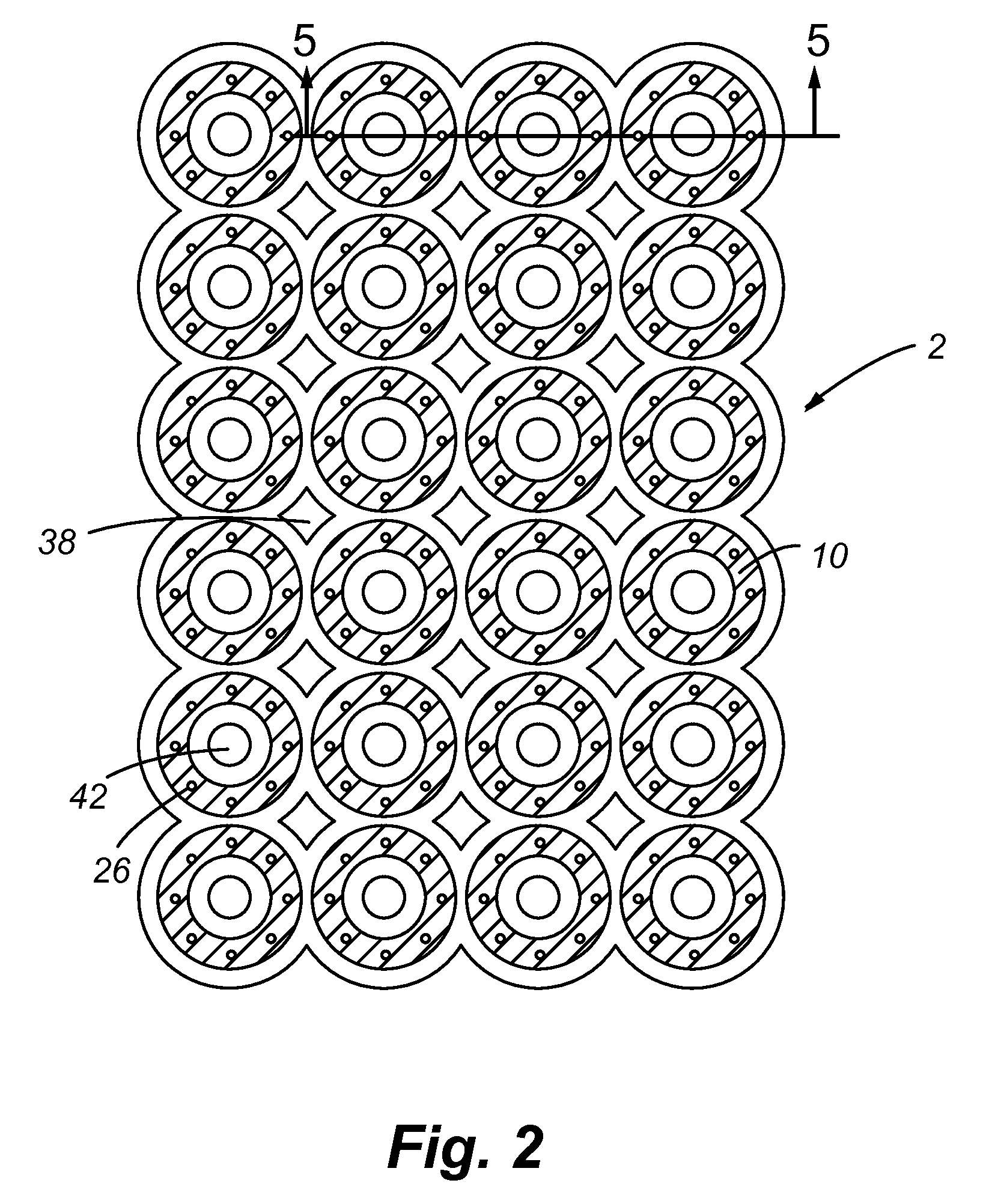Method and apparatus for positioning heating elements
a heating element and positioning technology, applied in the field of underlayments, can solve the problems of poor heat dissipation effect, and inability to maintain hot water storage tanks, so as to facilitate the placement of the same, reduce the weight of the underlayment layer, and enhance the bond
- Summary
- Abstract
- Description
- Claims
- Application Information
AI Technical Summary
Benefits of technology
Problems solved by technology
Method used
Image
Examples
Embodiment Construction
[0033]Referring now to FIGS. 1-5, an underlayment layer 2 of one embodiment of the present invention is shown that includes a system of interconnected bases 6 and bosses 10. That is, preferably, each base 6 includes a boss 10 extending therefrom. Each boss 10 includes an outer surface 14 and an inner surface 18 and an upper surface 22. In some embodiments the upper surface 22 includes a plurality of holes 26. The bases 6 are generally circular and the bosses 10 are generally cylindrical. The bases 6 also include an outer diameter 30 and inner diameter 34. Again, a plurality of base / boss combinations are interconnected to form the underlayment layer 2.
[0034]The bosses 10 of one embodiment of the present invention are between about 1 / 16 inches wide. The spacing between individual bosses 10 is between about 1 inch to 1.5 inches. One skilled in the art, however, will appreciate that the boss sizes and spacing therebetween may be altered to accommodate different sizes of heating elements...
PUM
 Login to View More
Login to View More Abstract
Description
Claims
Application Information
 Login to View More
Login to View More - R&D
- Intellectual Property
- Life Sciences
- Materials
- Tech Scout
- Unparalleled Data Quality
- Higher Quality Content
- 60% Fewer Hallucinations
Browse by: Latest US Patents, China's latest patents, Technical Efficacy Thesaurus, Application Domain, Technology Topic, Popular Technical Reports.
© 2025 PatSnap. All rights reserved.Legal|Privacy policy|Modern Slavery Act Transparency Statement|Sitemap|About US| Contact US: help@patsnap.com



